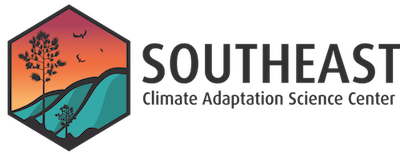Tribal Climate Change Adaptation Resources
The Guidelines for Considering Traditional Knowledges in Climate Change Initiatives provides provisional guidelines for understanding the context of traditional knowledge in the process of climate adaptation.
Climate Mapping For Resilience and Adaptation is a tool with downscaled results from global climate models. Results for selected geographies indicate how local exposure to five common climate-related hazards is projected to change through this century. Assessing climate vulnerability and risk to your local assets will require additional information that is not available in this tool.
Dibaginjigaadeg Anishinaabe Ezhitwaad was developed by the Great Lakes Indian Fish and Wildlife Commission and is written in the Anishinaabe language. This resource provides a framework to integrate Indigenous and Traditional knowledge, culture, language and history into the climate adaptation planning process, and can be adopted and modified as needed to conform to the needs and values of other Tribes.
The Tribal Climate Change Adaptation Planning Toolkit is a collection of other templates and resources to assist Tribes in the process of climate adaptation. They are not meant to be followed directly. Rather, these frameworks should guide the adaptation process and be accommodated accordingly to fit the specific needs of the area and community.
Climate Change Resources for Tribes is a visual guide that connects users with various sectors of climate adaptation. This includes funding information, meetings, communication tools, and relevant climate data.
Additional Resources
- United South and Eastern Tribes (USET)
- United South and Eastern Tribes Community Resilience Headlines
- ITEP Tribes & Climate Change Program
- National Park Service-Traditional Ecological Knowledge
- Fourth National Climate Assessment: Tribes and Indigenous Peoples
- Bureau of Indian Affairs Branch of Tribal Climate Resilience
- Second State of the Carbon Cycle Report: Tribal Lands
- National CASC Webinar Series on Incorporating Indigenous Knowledges into Federal Research and Management
- Guidance for Federal Departments and Agencies on Indigenous Knowledge
Tribal Resources Web App
This interactive WebApp contains information about state and federally recognized Tribes in the southeast, including web links to connect users with a first-hand account of the Tribe’s story. Additionally, phone and email information for designated Tribal points of contact are highlighted to link users with relevant Tribal climate change adaptation experts. Each of these geographic layers can be viewed individually or in tandem. To toggle layers on/off, navigate to the second icon in the menu to the left. From there, you can select which information to be displayed. A full view web version of the application can be viewed here.
